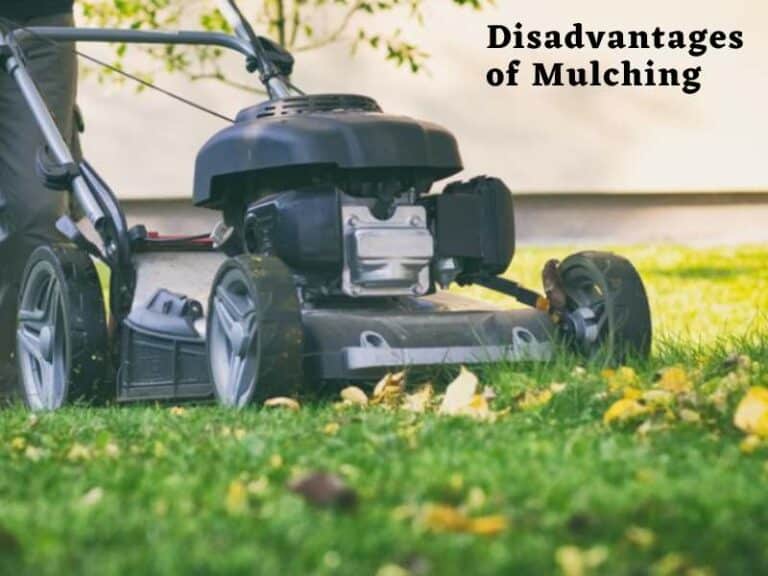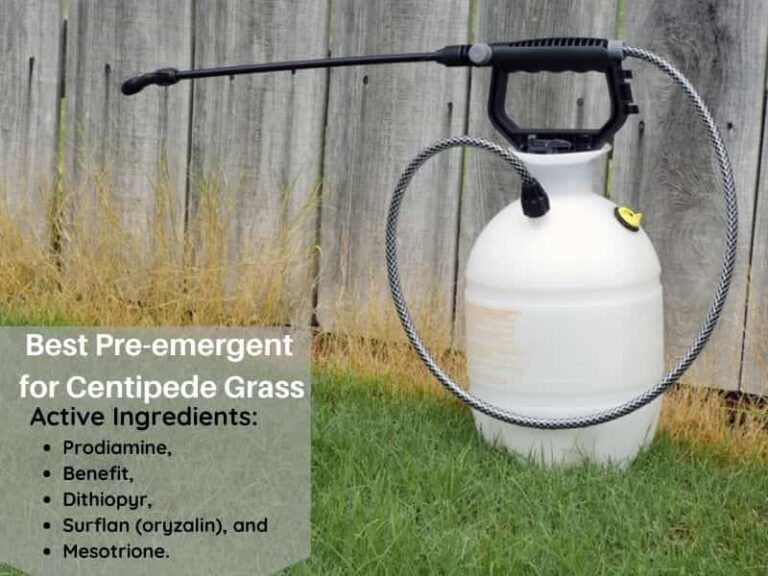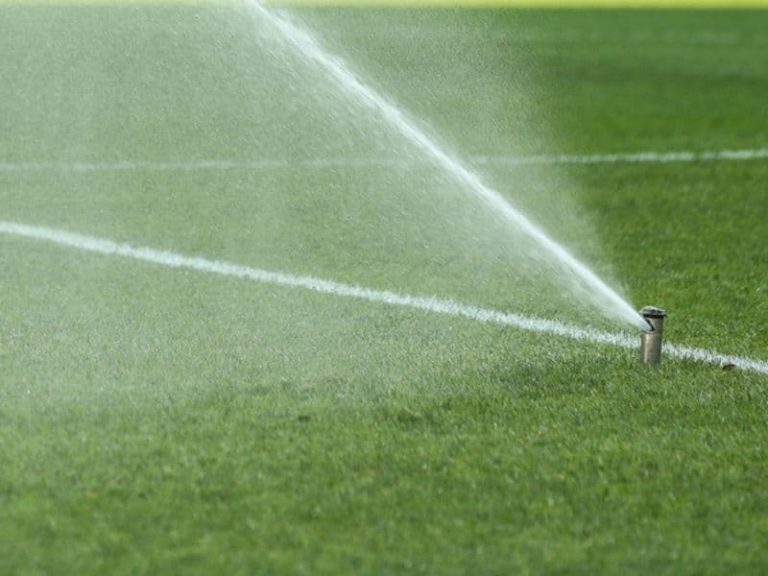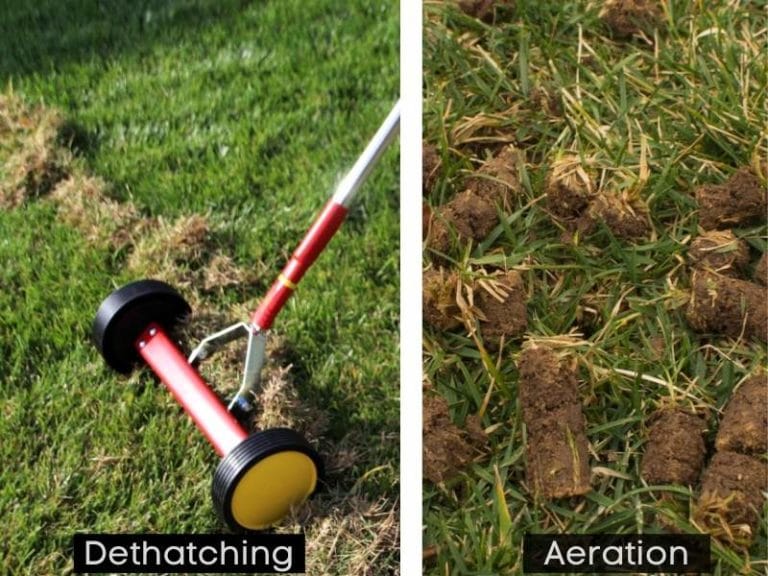Best Grass for Shade in the South
It takes work to maintain a shaded lawn in the south. On top of the environmental stressors caused by the hot and dry conditions typical in these regions, turfgrasses also have to cope with the reduced light exposure in a shaded lawn.
The best grasses for shade in the south are cool-season grasses like tall fescue, fine fescue, Kentucky bluegrass and warm-season grasses like St. Augustine and Zoysia grass. Despite their high tolerance for partial shade, these grasses still need proper management practices for optimum growth and development in these reduced sunlight conditions.
Table of Contents
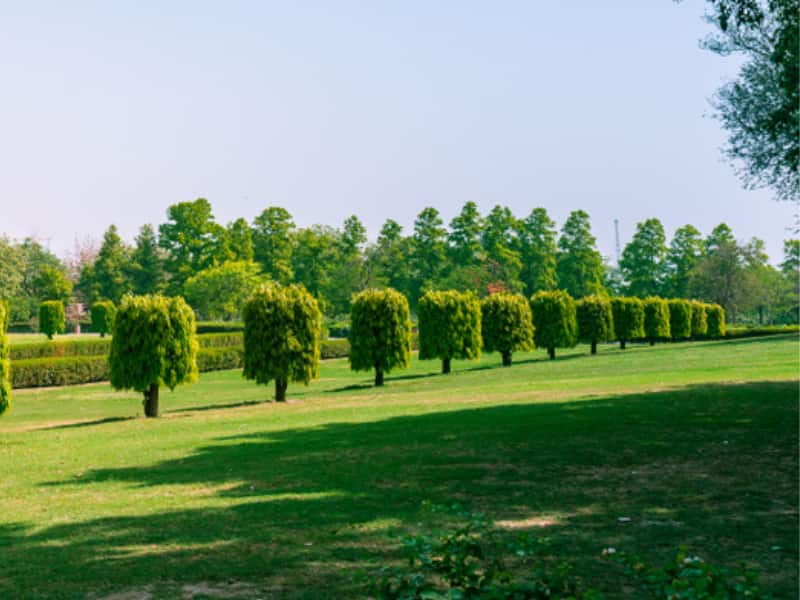
Is Sunlight Important to Turf Lawn?
Grass converts sunlight into energy in the form of carbohydrates through photosynthesis. Photosynthesis helps grass absorb energy from the sun, water, and gases from the air to create glucose that supports grass growth. Inadequate sunlight limits glucose availability, depleting the energy reserve that makes grass thin out and dies.
Carbohydrates are essential for the growth and development of grass; growth and vigor reduce when this energy source is insufficient. Sunlight also helps regulate the flow of energy within grass leaves, and if in excess, it’s converted into heat and sent back out as a protective mechanism minimizing critical protein damage within grass leaves.
Generally, turfgrasses thrive in full sunlight and require at least 4-6 hours of full sun daily. In shaded conditions, grass cannot efficiently absorb orange, red, and blue light, facilitating photosynthesis and carbohydrate production.
Turfgrass that lacks adequate amounts of these valuable wavelengths of light turn brown as they’re unable to produce chlorophyll, which is needed for photosynthesis. These shaded grasses also thin out as root development (rhizomes and stolons) stifles. Shaded grass is more susceptible to diseases and environmental stressors.
Note that shade-tolerant grasses need minimal daily sunlight for proper growth and development. Some plants require full sun, while others prefer less than 3 hours of direct sunlight. In shady areas, plants have also evolved to absorb nutrients and water from decomposing organic material and other plants found in the soil.
Best Grasses for Shade in the South
The table below summarizes the types of cool-season grasses that do well in various conditions of light and soil moisture availability, as well as the recommended seeding rates when using combination grasses in shady conditions:
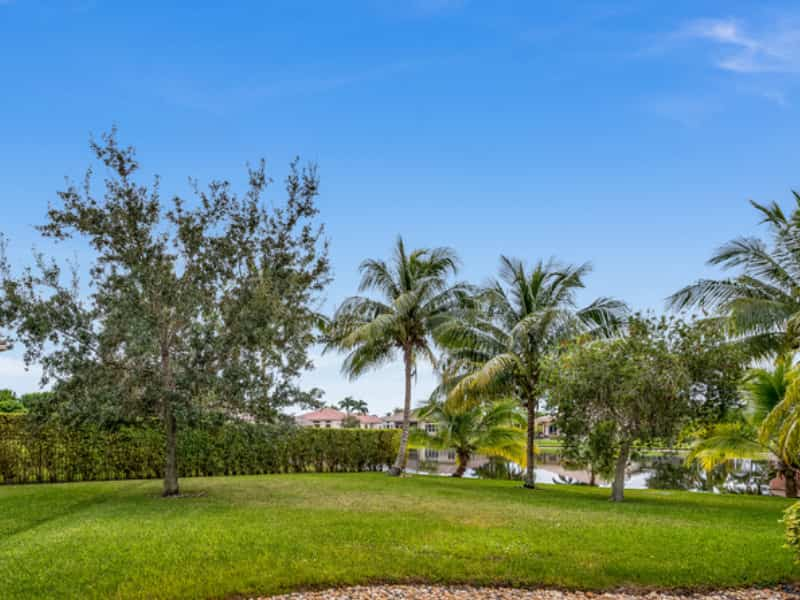
| Environmental Conditions | Preferable Turfgrass Species | Recommended Turfgrass Mixtures + Seeding Rates |
|---|---|---|
|
Hard fescue, spreading fescue, sheep fescue, slender creeping fescue, Chewing’s fescue, fine fescue, and turf-type tall fescue |
Lightly shaded, dry lawns |
|
Various Kentucky bluegrass cultivars, including A-34, Georgetown, and Absolute |
A mixture of 50% Kentucky bluegrass and 50% fine fescue at 3-4 pounds of seed per 1000 square feet |
|
Various Rough stalk bluegrass cultivars, including Colt, Laser, and Saber |
A mixture of 70% rough stalk bluegrass + 30% perennial ryegrass at 3-4 pounds of seed per 1000 square feet |
|
Various Perennial ryegrass varieties, including Citation II, Fiesta II, and Manhattan II |
A mixture of 50% perennial ryegrass + 50% rough stalk bluegrass at 3-4 pounds of seed per 1000 square feet |
Cool-Season
Cool-season grasses are the best for shade in the south, as they grow better in low-light conditions compared to their warm-season counterparts. Going for cool-season varieties that do well in dry soil is advisable, as is typical in the south. Examples include Kentucky bluegrass, tall, fine, and hard fescue.
You can also mix different cool-season grass types for improved shade tolerance in dry conditions. A good example is a tall fescue mixture with a shade-tolerant variety of Kentucky Bluegrass. Also, fine fescues exhibit excellent shade tolerance in partially shaded lawns that receive minimal maintenance.
Note: Generally, fine fescues have better shade tolerance than tall fescues. Regardless, these cool-season grasses have excellent shade tolerance in upstate regions in the south. Upstate areas are regions with a higher elevation, away from sea level.
Warm-Season
The most shade-tolerant warm-season turfgrasses are St. Augustine grass and Zoysia grass. Meanwhile, centipede, carpet, and Bahia grass tolerate light shade conditions but will suffer extensive winter injury in moderate-heavy shade. Avoid planting Bermuda grass in partial shade, as it’s a turfgrass with poor shade tolerance.
- St. Augustine only requires 4 hours of sunlight per day to thrive. The St. Augustine cultivars best adapted to shade in the coastal regions in the south include Palmetto, Raleigh, and Jade. Examples of southern states with a shoreline include Texas, Louisiana, and Florida.
- Zoysia grass tolerates light-moderate shade but not heavy shade. El Toro, Cavalier, and Belaire are the most shade-tolerant Zoysia grass cultivars. Meanwhile, Emerald and Meyer varieties can only withstand light shade but not moderate-heavy shade.
- Centipede grass has fair shade tolerance. Seeded varieties include TifBlair and Centiseed, while Oaklawn and TennTurf cultivars can be established via sprigging and sodding.
- Carpet grass also has medium shade tolerance and is usually established via seed. However, sprigs and sods are not commonly available for both broadleaf and common carpet grass varieties.
- Various Bahiagrass cultivars will survive in light shade, including Pensacola and Argentine.
- Bermuda grass and Buffalo grass have poor shade tolerance and aren’t recommended for low-light conditions.
Note: Warm-season grasses have poor shade tolerance compared to cool-season grasses. However, since the south typically experiences hot and dry conditions unsuitable for cool-season grasses, warm-season grasses with relatively good shade tolerance are the best options.
Transition-Zone
It’s hard for turfgrasses to thrive all year round in the transition zone. Warm-season grasses find the winters in this region too cold, while the summers are too hot and dry for cool-season grasses.
Usually, homeowners in the southern transition zone prefer Bermuda grass to withstand the hot summers and overseed with perennial ryegrass for a year-round green lawn. However, if the lawn is partially shaded, Bermuda grass isn’t a good option, and the more shade-tolerant Zoysia grass is recommended. The zoysia lawn should be overseeded with shade-tolerant cool-season grass like Kentucky bluegrass, fine fescue, or tall fescue.
Note: Zoysia grass also has better cold tolerance than Bermuda grass and stays green longer in winter. St. Augustine grass also has poor cold tolerance and isn’t recommended for shaded lawns in the transition zone, even though it has excellent shade tolerance.
Features of the South
The south has tropical and subtropical climates where temperatures during the growing season are typically between 80-95 degrees Fahrenheit. These temperature conditions favor the growth of warm and cool grasses with relatively good heat tolerance.
- The upper south (USDA zone 6) experiences long winter chill periods and isn’t suitable for turfgrasses with poor cold tolerance. Meanwhile, the Middle South (USDA zone 7) is a transition zone where summers are hot and humid, and winter is relatively shorter.
- The lower south (USDA zone 8) typically experiences summer drought, usually offset by torrential rainfall. The last spring frost in this region occurs in late April.
- The coastal south (USDA zone 9) experiences brief winters and long, humid summers. Finally, the tropical south (USDA zones 10-11) rarely gets frosty.
- The soil type varies from sandy, silt, clay, and loamy soils, which vary in soil aeration, water infiltration, and root growth. Sandy soils tend to be dry, nutrient-deficient, and fast-draining. Clay soils have a greater tendency to hold water(get soggy) and dry to form a crust, which is often very hard. Silty soils are more fertile than sandy soils and have a greater tendency than other types to form a crust. The South soil tends to vary from well-drained upland soils to poorly drained, and their temperature varies within the year. The grass establishment will majorly depend on the soil type and management practice.
Note: The South’s soil is diverse and influenced by various factors, including soil type, texture, fertility, temperature, drainage, and structure.
What Should I Consider When Selecting Turfgrass for Shade
To be able to establish a thriving turf lawn in the south, considering its soil composition and climatic features, you also need to incorporate the following factors:

1. Disease management
Turfgrasses growing in the shade are usually more vulnerable to diseases linked to moisture and humidity since surface moisture retention and restriction of air movement become more pronounced in shaded conditions. Consider planting disease-resistant cultivars and adopting good management practices to limit the severity of diseases on your shady lawn.
2. Water requirements
Shady lawns have slower evaporation rates and thus require less frequent watering. Water the lawn deeply but infrequently for more profound root growth that will help to counter disease problems associated with turfgrasses growing in shady conditions. If your shaded turfgrass is wilting, it could be due to increased root competition for soil moisture, and you should increase the irrigation rate.
3. Fertilizer requirements
Grasses growing in the sun only need ½-⅔ of the fertilizer required by turfgrasses growing in the sun since the former suffers excessive shoot growth and increased vulnerability to disease if fed nitrogen in excess. A turfgrass growing in shade becomes more resistant to disease and environmental stressors when fertilizer is applied at lower than the recommended rates.
4. Mowing requirements
Turfgrasses growing in the shade need a larger leaf surface area to take full advantage of the minimal amount of light that reaches the shoots. As such, you should mow no more than ⅓ of the leaf surface area. Due to this reason, the ideal mowing height for grasses in the shade is 0.5-1 inch higher than usual. Also, remove grass clippings after mowing to prevent further light restriction.
5. Traffic
Shaded turf is more vulnerable to wear damage from high foot traffic and should be used with this in mind. Avoid using riding mowers whose wheels can cause turf decline.
6. Dethatching and Aerating
It’s an excellent practice to dethatch a lawn growing in the shade whenever the thatch layer builds up beyond ½ an inch, as the excessive thatch layer exacerbates the problem of light blockage. Use a rake to dethatch the lawn properly.
Aeration, on the other hand, allows for improved penetration of water and nutrients into the soil for optimal root growth that enables shaded grasses to withstand the stresses of growing in the shade.
Alternatives To Shade Grass
The best alternatives to shade grass are ornamental grasses/plants with exceptional shade tolerance, low maintenance, and few pest and disease problems. They include:
- Japanese forest grass
- Northern sea oats
- Tufted hair grass
- Korean feather reed grass
- Switchgrass,
- Little blue stem
- Yellow Indian grass for sunny sites
- Bottlebrush grass or Pennsylvania sedge for shady sites
- Other great options include moss, creeping Charlie, snow-on-the-mountain, Lily-of-the-Valley, sweet woodruff, sedges, sweet flag, and fall-blooming reed grass.
Additionally, you can consider replacing your lawn with pollinator-friendly plants like clover or microclover, which are softer, entirely walkable, and playable.
References
I. Clemson Cooperative Extension: Growing Grass in Shade
Barton Hill Farms: What is Photosynthesis?
***********************************************************************************************

